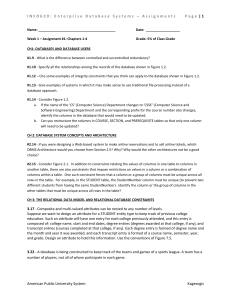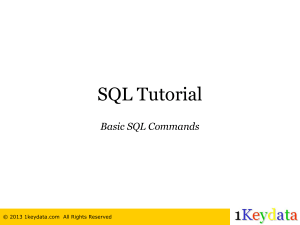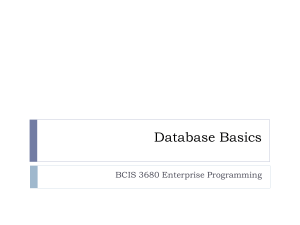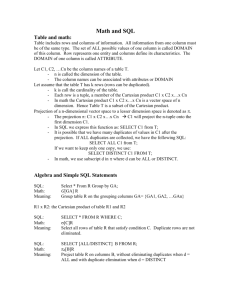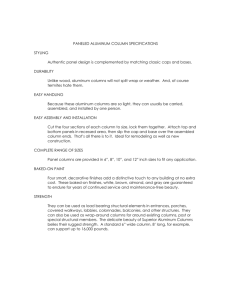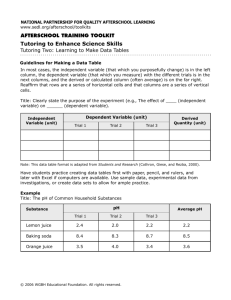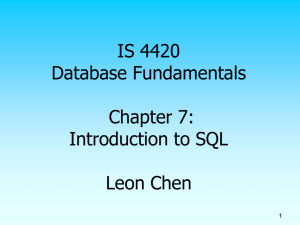Database Mid-term Questions: Chapters 1-4
advertisement
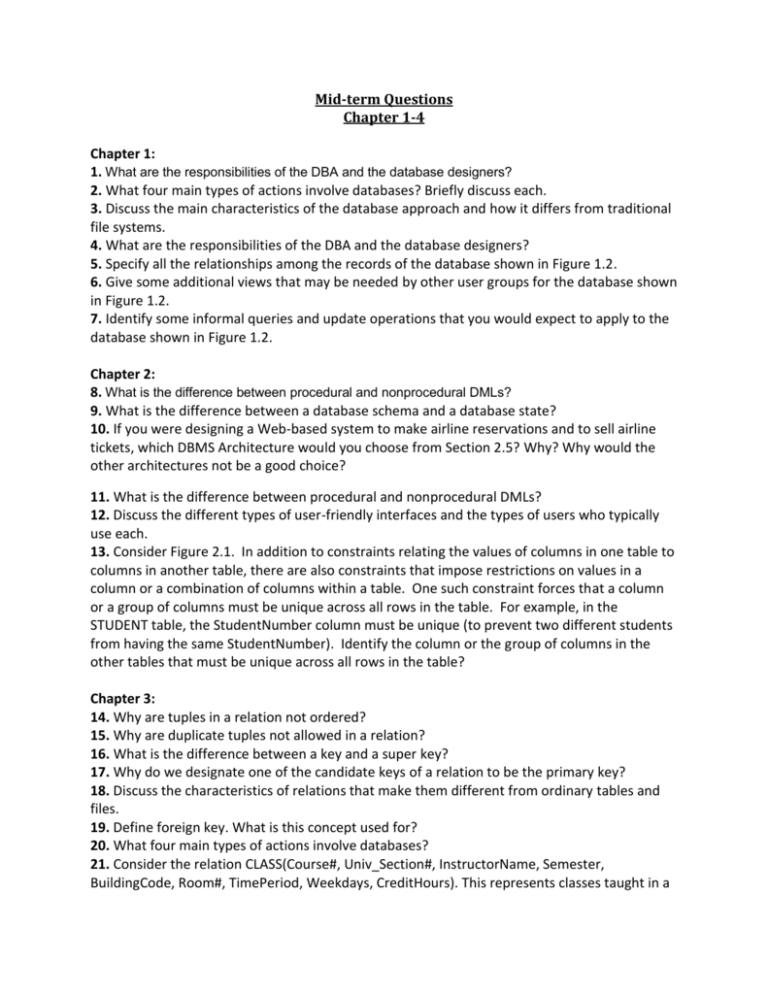
Mid-term Questions Chapter 1-4 Chapter 1: 1. What are the responsibilities of the DBA and the database designers? 2. What four main types of actions involve databases? Briefly discuss each. 3. Discuss the main characteristics of the database approach and how it differs from traditional file systems. 4. What are the responsibilities of the DBA and the database designers? 5. Specify all the relationships among the records of the database shown in Figure 1.2. 6. Give some additional views that may be needed by other user groups for the database shown in Figure 1.2. 7. Identify some informal queries and update operations that you would expect to apply to the database shown in Figure 1.2. Chapter 2: 8. What is the difference between procedural and nonprocedural DMLs? 9. What is the difference between a database schema and a database state? 10. If you were designing a Web-based system to make airline reservations and to sell airline tickets, which DBMS Architecture would you choose from Section 2.5? Why? Why would the other architectures not be a good choice? 11. What is the difference between procedural and nonprocedural DMLs? 12. Discuss the different types of user-friendly interfaces and the types of users who typically use each. 13. Consider Figure 2.1. In addition to constraints relating the values of columns in one table to columns in another table, there are also constraints that impose restrictions on values in a column or a combination of columns within a table. One such constraint forces that a column or a group of columns must be unique across all rows in the table. For example, in the STUDENT table, the StudentNumber column must be unique (to prevent two different students from having the same StudentNumber). Identify the column or the group of columns in the other tables that must be unique across all rows in the table? Chapter 3: 14. Why are tuples in a relation not ordered? 15. Why are duplicate tuples not allowed in a relation? 16. What is the difference between a key and a super key? 17. Why do we designate one of the candidate keys of a relation to be the primary key? 18. Discuss the characteristics of relations that make them different from ordinary tables and files. 19. Define foreign key. What is this concept used for? 20. What four main types of actions involve databases? 21. Consider the relation CLASS(Course#, Univ_Section#, InstructorName, Semester, BuildingCode, Room#, TimePeriod, Weekdays, CreditHours). This represents classes taught in a university with unique Univ_Section#. Give what you think should be various candidate keys and write in your own words under what constraints each candidate key would be valid. Chapter 4: 22. Write SQL update statements to do the following on the database schema shown in Figure 1.2. 23. List the data types that are allowed for SQL attributes. 24. Describe the four clauses in the syntax of a simple SQL retrieval query. 25. Specify the following queries in SQL on the database schema of Figure 1.2.
